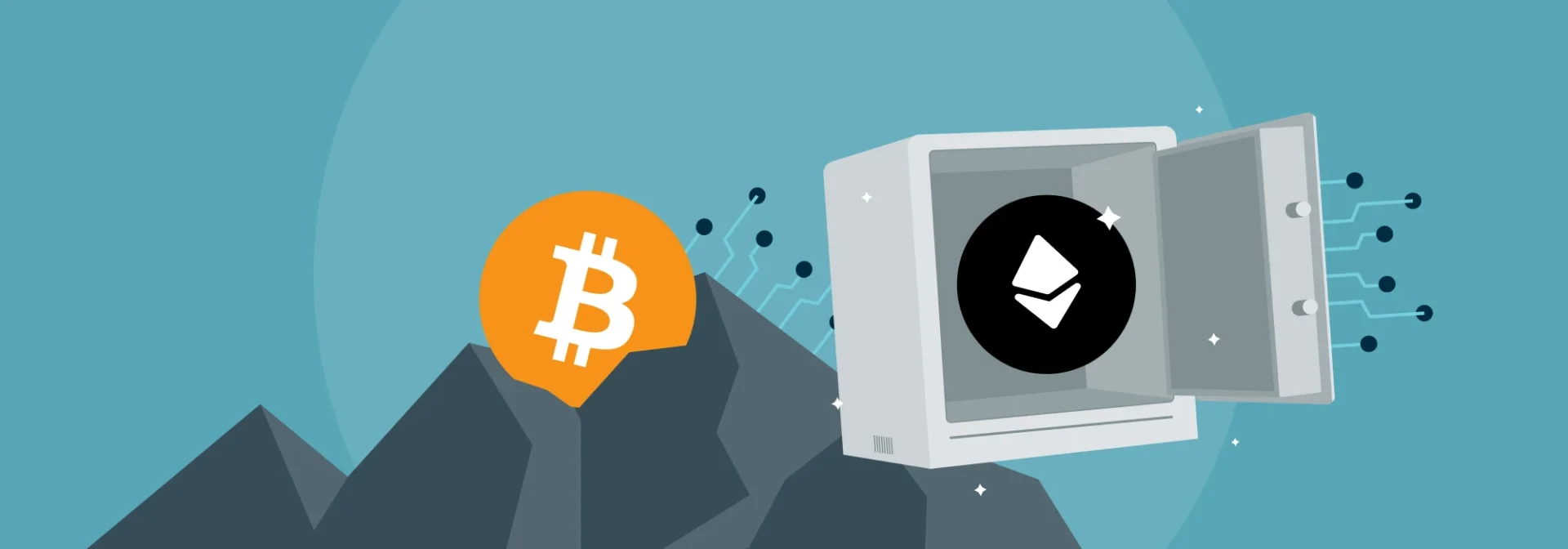Proof of Work (PoW) and Proof of Stake (POS) Explained

What is Proof-of-Work (PoSW)?
The term Proof-of-work (POW) refers to a decentralized consensus mechanism used in blockchain technology to generate and verify new blocks. It involves all network participants verifying new transactions through a proof- of- work before being added to the network.
Put simply, PoW is a competition among all network members to solve a complex mathematical problem, whose solution can be easily validated by other participants. The one who finds the correct hash value the fastest is rewarded. This economic incentive ensures that enough people worldwide participate in the network to keep it running and make it more reliable.
A block is created by combining all transactions within a certain time interval. Before a node can transmit the new block, a certain amount of computing power is required to solve a complex computational task. The network participant who first solves this task generates a hash from the solution and the block content. This hash must meet certain requirements specified in the network protocol. Once the correct hash value has been found and validated by the other network members for its validity, the new block can be added to the blockchain.

PoS systems were developed to address some of the inefficiencies in PoW-based blockchains, particularly the high energy and hardware costs associated with PoW mining.
Unlike Proof-of-Work, where blocks are validated through competition between miners and require massive computing power (i.e. whoever finds the correct hash value first is rewarded), an algorithm usually decides who is eligible as a validator in Proof-of-Stake. This means that in order to add blocks to the blockchain, nodes do not have to compete against each other through energy-intensive mining, but rather deposit their own coins or tokens as collateral in the network and can then use their computer hardware to verify the validity of data based on the deposit.
As a result, energy-intensive mining is not required in PoS networks, unlike PoW.
To partake in PoS, there are generally several ways to be selected as a validator by the algorithm. The most common is based on the amount of staked coins or tokens; the greater the stake, the higher the likelihood of being chosen as a block validator. Another method considers the age of the used cryptocurrencies; the longer they’ve remained unused, the greater the chance of selection. Once the coins or tokens have been used to validate a block, their age is reset to zero. A third option involves the random principle, selecting the lowest hash value combined with the highest stake to validate the block.

Sources
Conway, L. (2023b) “What Is Bitcoin Halving? Definition, How It Works, Why It Matters,” Investopedia. Available at: https://www.investopedia.com/bitcoin-halving-4843769, last accessed 23.09.2023.
Frankenfield, J. (2023d) “What Is Proof of Work (PoW) in Blockchain?,” Investopedia . Available at: https://www.investopedia.com/terms/p/proof-work.asp, last acessed 12.09.2023.
What is Proof-of-Work? – A Deep Dive (2023). Available at: https://www.realvision.com/blog/what-is-proof-of-work, last accessed 12.09.2023.
What is Proof of Work? | Research & Fundamentals | Bitcoin Suisse (2021). Available at: https://www.bitcoinsuisse.com/news/what-is-proof-of-work, last accessed 12.09.2023.
Cointelegraph (2017) “The History and Evolution of Proof-of-Stake,” 15 October. Available at: https://cointelegraph.com/news/the-history-and-evolution-of-proof-of-stake, last accessed 12.09.2023.
Frankenfield, J. (2023c) “What Does Proof-of-Stake (PoS) Mean in Crypto?,” Investopedia. Available at: https://www.investopedia.com/terms/p/proof-stake-pos.asp, last accessed 12.09.2023.
Ethereum (2023) Proof-of-stake (PoS) | ethereum.org. Available at: https://ethereum.org/en/developers/docs/consensus-mechanisms/pos/, last accessed 12.09.2023.
Disclaimer
The content of this article is for informational purposes only and does not constitute financial, investment, and/or trading advice. We strongly recommend that you conduct the necessary research before making an investment, and/or trading decision. Please note that past performance does not guarantee future results.
Liability of the Börse Stuttgart Group and its subsidiaries for the article is excluded.